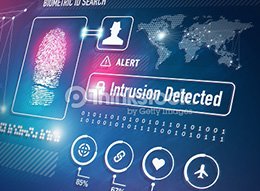Combatting Cybercrime with Multi-Factor Authentication in Microsoft Azure
Updated November 2021
Back in 2020, working from home emerged as a necessity in response to a pandemic. Now, businesses have realized the convenience and appeal it offers, and an increasing number of companies have incorporated remote or hybrid work into their overall business strategies.
In addition to the rise in remote work, we have also seen a number of high-profile business breaches over the past year that have highlighted the importance of cybersecurity. The SolarWinds breach and the Colonial Pipeline attack both clearly demonstrate that businesses of all sizes can be hit by these criminals, and everyone needs to be ready. Businesses have begun to realize that criminals care less about the size of your organization or your industry. They only care about whether or not they see you as a likely target.
With employees working from their own offices and breaches disrupting businesses of all sizes, cybersecurity has to take center stage in a new way. Keeping your network safe, while also ensuring your employees have access, requires a careful balance. Multifactor authentication can provide you with an excellent tool to get started. Let’s explore the value that this single authentication strategy can offer.
Breaking Down the Basics: What Is Two-Step Verification?
Two-step verification serves as a critical second layer of security that demands an additional method of authentication to allow user sign-ins and transactions. It works by requiring two forms of account authentication to prevent unauthorized access or account hacks.
Two-factor authentication involves any two or more of the following verification methods:
- Something a user creates and knows (typically a password)
- Something only the user has possession of (a trusted device that is not easily duplicated, like a smartphone or tablet)
- Something entirely unique to the user’s actual being (biometrics like fingerprint logins)
As people work from home and engage with their organizations remotely, they access company networks across a variety of platforms and devices. Between smartphones, tablets, laptops, and PCs, business users have multiple ways to access accounts and applications from anywhere. Two-step verification allows business users to implement an extra layer of protection in this growing digital atmosphere. Furthermore, as leaders in business technology optimization, Microsoft has wasted no time in implementing their own two-factor authentication method for Azure.
Secure Azure: Benefits of Multifactor Authentication in Microsoft Azure
Azure multifactor authentication (MFA) is an easy-to-use, scalable, and reliable two-factor authentication solution that provides increased protection of user accounts. Azure MFA helps professionals control and protect access to data and applications, without creating a ridiculously complicated and irritating sign-in process for users. Azure MFA allows users to implement a reliable authentication system, through a variety of mediums.
Let’s break down the key benefits of implementing Azure MFA:
Easy To Use
First and foremost, Azure MFA is incredibly simple to implement and even easier to use. The extra protection that comes with Azure MFA allows users to manage their own devices, from anywhere, which alleviates the security burden for management and IT admin staff.
Scalable
Azure MFA harnesses the power of the cloud and integrates seamlessly with on-premise applications. This means Azure’s authentication feature can handle high-volume, mission-critical situations and is equipped to support business growth.
Consistent Protection
Azure MFA is designed specifically to ensure consistent and user-friendly authentication processes for business users. Azure MFA provides this consistent protection by deploying the highest industry standards and best practices.
Reliable
Because business never sleeps, Microsoft guarantees 99.9% availability of Azure MFA. The service is only unavailable when it is unable to receive or process verification requests for authentication.
How It Works: Functionality Considerations for Azure Multifactor Authentication
Azure MFA is so secure, thanks to its layered approach to protection. Hackers looking to gain unauthorized access to an account will have a much harder time compromising multiple checkpoints, as opposed to basic, password-only options. By implementing Azure MFA, even if a cybercriminal were to crack a user’s password, the information would be useless without possessing a trusted device or completing the next authentication step.
This means that, even if an employee’s home internet is breached or if your assistant forgets their laptop in their hotel room, you have an additional level of security protecting your information.
Azure multifactor authentication helps lock down access to data and applications, while meeting user demand for a simple sign-in process. It provides additional security by requiring a second form of authentication via a wide range of easy and customizable verification options.
The following is a list of methods that can be used for second-step verification:
Phone call
Here, a call is automatically placed to a user’s registered phone. To authenticate access, users enter a PIN, if necessary, followed by the # key.
Text message
If preferred, users can receive a text message on their mobile phones. The message will provide a six-digit code, and users then enter this code on the sign-in page to authenticate.
Mobile app notification
Users can also set up verification through the Azure mobile app. A verification request will be forwarded to a user’s smartphone, and the user is then able to enter a PIN, if necessary, followed by selecting Verify on the mobile app to authenticate.
Mobile app verification code
Similar to the previous option, the Azure mobile app also has a verification code feature that users can take advantage of. The app, running on user smartphones, has a tool that generates verification codes that change every 30 seconds. Users select the most recent code and enter it on the sign-in page to authenticate.
Third-party OATH tokens
Finally, if – for whatever reason – the above options aren’t preferred, the Azure multifactor authentication server can be configured to accept third-party verification strategies as well.
IMPORTANT NOTE: Azure multifactor authentication provides varying verification methods for both the cloud and server platforms. Business owners can choose which methods are available for users. For full details, check out info on selectable verification methods.
Strategies for Implementation: Getting Started With Azure Multifactor Authentication
Now that we have the lay of the land, let’s take a look at the steps necessary for implementing Azure MFA for business users. Implementing the solution isn’t difficult at all and, if business owners follow this step-by-step guide, they’ll have a second layer of security deployed in no time.
PREREQUISITE
Before anything else, businesses must be signed up for an Azure subscription.
In order to take advantage of Azure MFA, businesses that do not already have an Azure subscription will need to sign up for one. If you are just starting out and want to take a test drive, there is a trial subscription option.
Enable Azure Multifactor Authentication
This part is generally easy and automatic. As long as business users have licenses that include Azure MFA, there’s nothing that you need to do to manually activate the feature. You can start requiring two-step verification on an individual user basis under the following Azure licenses:
However, if you don’t have one of these 3 licenses, or you don’t have enough licenses to cover all business users, you’re not out of luck. You’ll just have to complete an extra step and create an MFA provider in your Azure directory. For full instructions, check out this guide.
Turn on two-step verification for users
Next, business owners need to turn on the two-step verification feature so that it’s required of all users. You have the option to enforce two-step verification for all sign-ins or create conditional access policies to require two-step verification only in certain situations. This can be valuable for businesses that want to add an extra layer of security for people working from home offices or other remote locations. You can require additional authentication steps for those accessing data outside of your office network. There are a variety of ways to set up your preferred method – you can find a collection of step-by-step procedures here.
Configuration
Finally, once Azure MFA is set up, business owners can configure and optimize deployment. The configuration allows for a variety of customizing strategies, like fraud alerts, bypass permissions, trusted device logs, and more. For full details on strategies for configuration, check out this how-to configuration guide.
The business environment continues to change at a rapid pace, particularly with the widespread adoption of hybrid and fully remote work options. As businesses look to combine the convenience of allowing employees to work remotely with the necessary security, they need strategies that will protect their data and information. This means it’s now more important than ever for business owners to get strategic with IT security.
Azure’s MFA two-factor verification solution offers business owners an easy way to combat cybercrime, empower users and protect company data. Employees have an extra level of protection on their devices and for their different platforms, whether they log in from an office building or from a location a thousand miles away. Azure MFA operates as an additional line of defense for business users, making it harder than ever for cybercriminals to hack into password-protected accounts.
Is your company making use of Azure MFA or another solution for two-step verification? If not, what are you waiting for? Whether or not you have implemented remote work options, cybercriminals have made it clear that they continue to look for new ways to breach business networks. Implementing two-factor authentication is one of the easiest ways to up your cybersecurity game. If you have questions about implementation, reach out to a local IT firm for professional consultation. You have nothing to lose and everything to gain.








